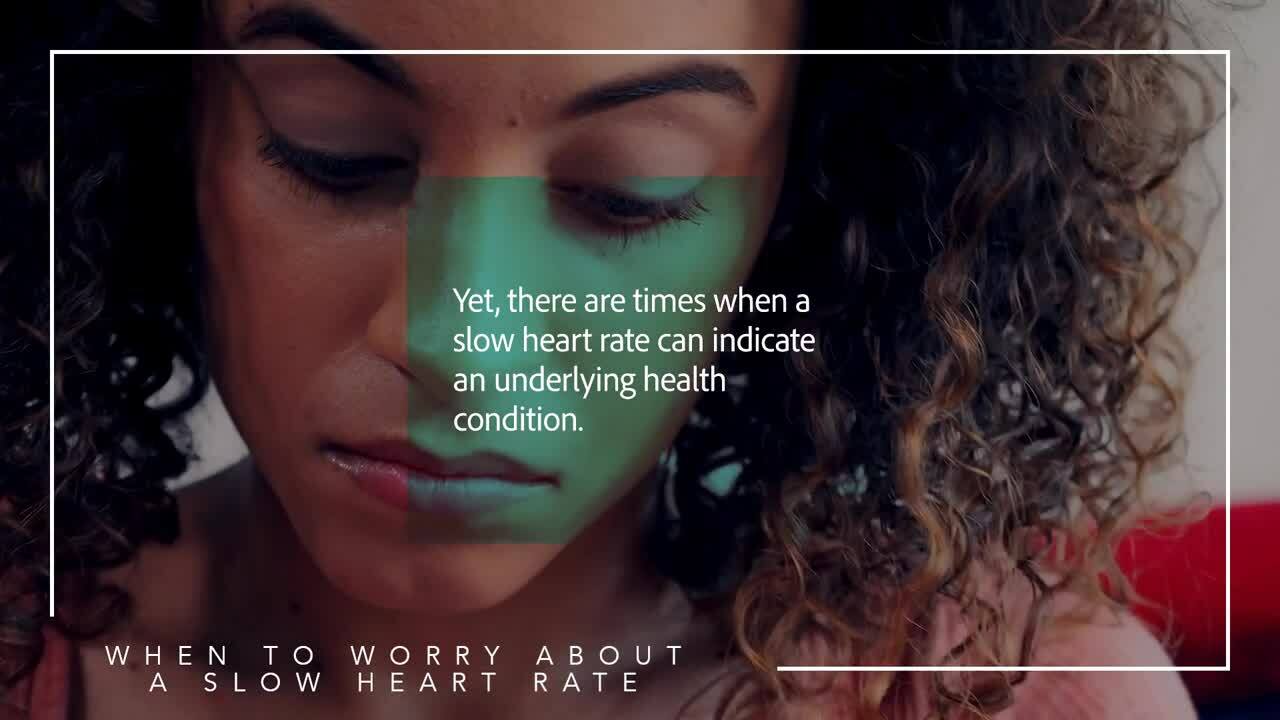Join Our eNewsletter!
Subscribe to our monthly newsletter to receive encouraging advice to help you lead a healthy lifestyle.

When to Worry About a Low Heart Rate
Most people have experienced a racing or fast heart rate, possibly due to adrenaline, anxiety, or physical activity. But have you thought about a slow heart rate? Should you be concerned if your resting heart rate is below the normal level?

Slow Isn't Always Bad
A slow resting heart rate is known as bradycardia, which occurs at 60 beats per minute (bpm) or less, even when active. In contrast, a normal resting heart rate will fall in a range between 60 – 100 bpm.
A slow heartbeat isn't always a concern, though. A resting heart rate between 40 and 60 beats a minute during sleep is common for many people during sleep. It's also common for trained athletes, healthy young adults, and those who work out regularly to have a low heart rate while exercising – this low heart rate associated with fitness is health and normal. Also, older adults frequently have slower heart rates as their normal rhythms tend to slow down over time.
Yet, there are times when a slow heart rate can indicate an underlying health condition. If you have a slow resting heart rate along with the following symptoms it can be cause for concern:
- Chest pains
- Confusion/memory problems
- Dizziness
- Lack of energy
- Heart palpitations
Fortunately, bradycardia usually isn't an emergency and typically gives doctors some time to choose the right treatment.
Causes of Low Heart Rate Problems
The most common cause of a low heart rate is a malfunction in the heart's sinus node, its natural pacemaker. This area sends our electrical signals telling the top and bottom heart chambers the timing of when to pump blood through the body.
Other causes of low heart rate include an atrioventricular block, age, and certain conditions such as inflammation of the heart muscle, low thyroid function, electrolyte imbalance, obstructive sleep apnea, or heart attack due to coronary artery disease.

Is Treatment Required?
A low resting heart rate without symptoms isn't usually a cause of concern, but it's good to know what problems might occur if this does become a problem. A low resting heart rate in the 30s, for example, means the required oxygen isn't getting to the brain. This can make shortness of breath, fainting, and lightheadedness a possibility.
For those with symptoms, visit your physician to explore the situation more in-depth. Sometimes an EKG is used to measure the electrical signals in your heart. If needed, a pacemaker can be implanted to speed up your heart rate.
How to Reduce Your Risk of Developing Heart Disease
Even though bradycardia may not be prevented, you can reduce your risk of heart disease through regular exercise, eating heathy foods, keeping blood pressure and cholesterol in check, managing stress, and monitoring and treating existing heart disease.
I cannot overemphasize the importance of having regular physical exams and notifying your doctor of symptoms you are experiencing. This may be the only way to catch a problem that usually does not have symptoms early on.








